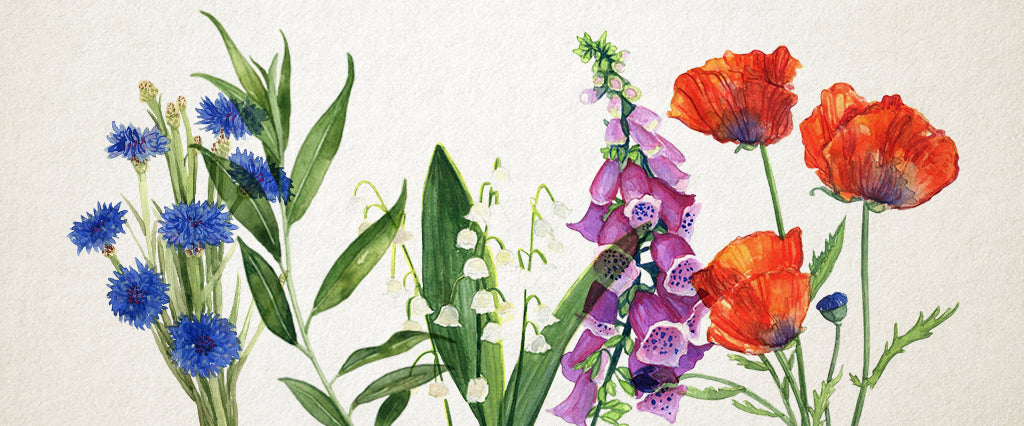This is the second part of our medicinal herb series, as we just started our herbal Product Sagitta Acute to market that is just the thing as soon as you realize you are getting sick.
Plants have many medicinal properties and have been used in the treatment of diseases and in the manufacture of medicines for a very long time. We wish you a lot of fun with the sequel! You can read the first post right here.

cornflower (Blossom)
Place of origin: Europe
Cornflowers are traditionally used in Central and Eastern Europe to soothe irritated and inflamed eyes. The chemicals from the flowers have been shown to be mildly anti-inflammatory.

opium poppy (seed pod)
Place of Origin: South East Europe & West Asia
The pain-relieving properties of opium have been known since Neolithic times, and poppies have been cultivated for over 4000 years. The main active ingredient in opium is morphine, one of the most powerful and important painkillers in modern medicine. However, it also has negative sides, since heroin is also made from opium.

Thimble & Wool Thimble (dried leaves)
Place of Origin: Balkans & Italy.
Foxglove was once used as a remedy for water retention. Research on foxgloves led to the discovery that woolly foxgloves can help patients with heart problems. Drugs based on the chemical digitalin are used to stabilize and strengthen the heartbeat of patients with heart problems.

lily of the valley (Blossoms)
Place of origin: Europe
Similar to the digitalin found in woolen foxgloves, chemicals found in lily of the valley may help regulate the heartbeat.

white willow (Bark)
Place of Origin: North Africa & Europe
In many cultures, the bark of the white willow has been and is used to make remedies to reduce fever, pain and discomfort. White willow contains pain-relieving salicin. Salicin is converted to salicylic acid, which is used to treat fever and joint inflammation. Aspirin was developed from salicylic acid.
Illustrations by Aleksandra Stanglewicz exclusively for Sagitta




Comments